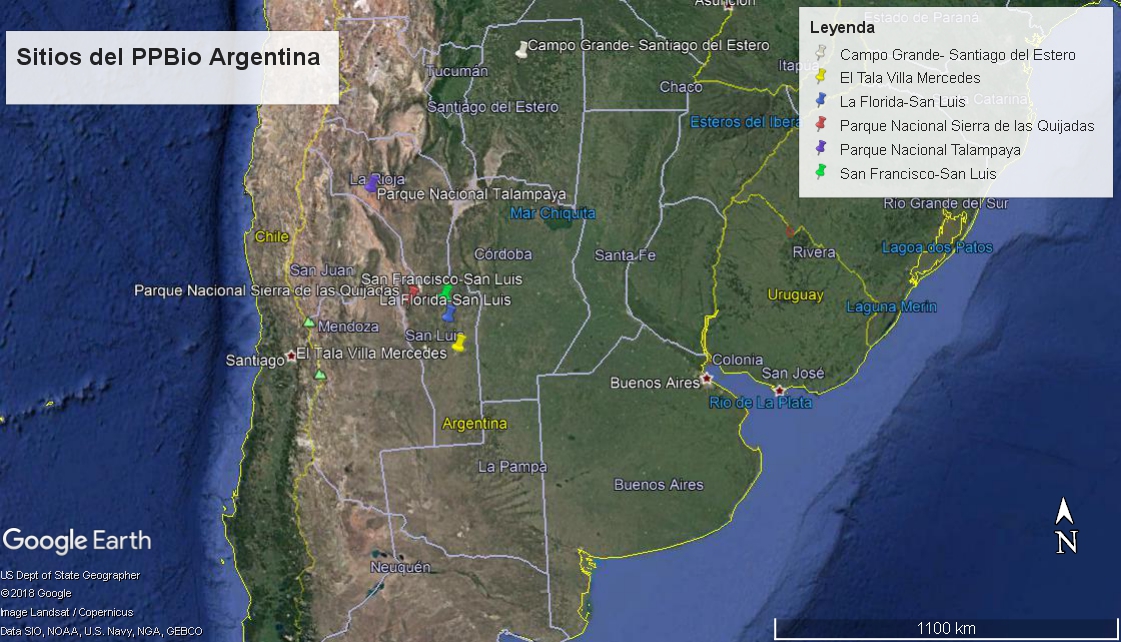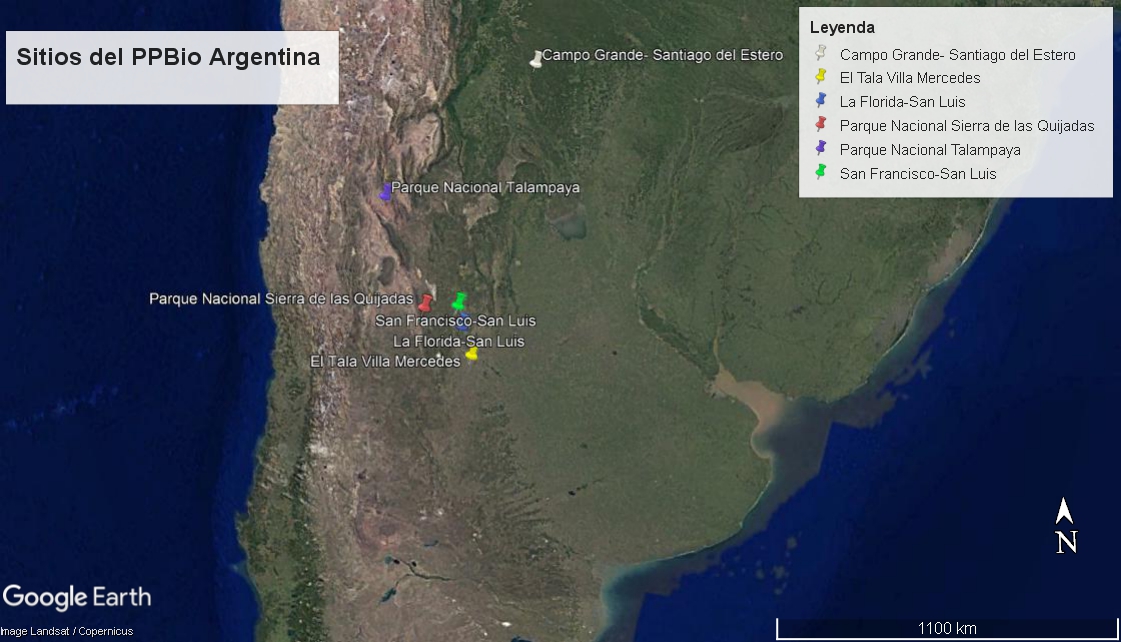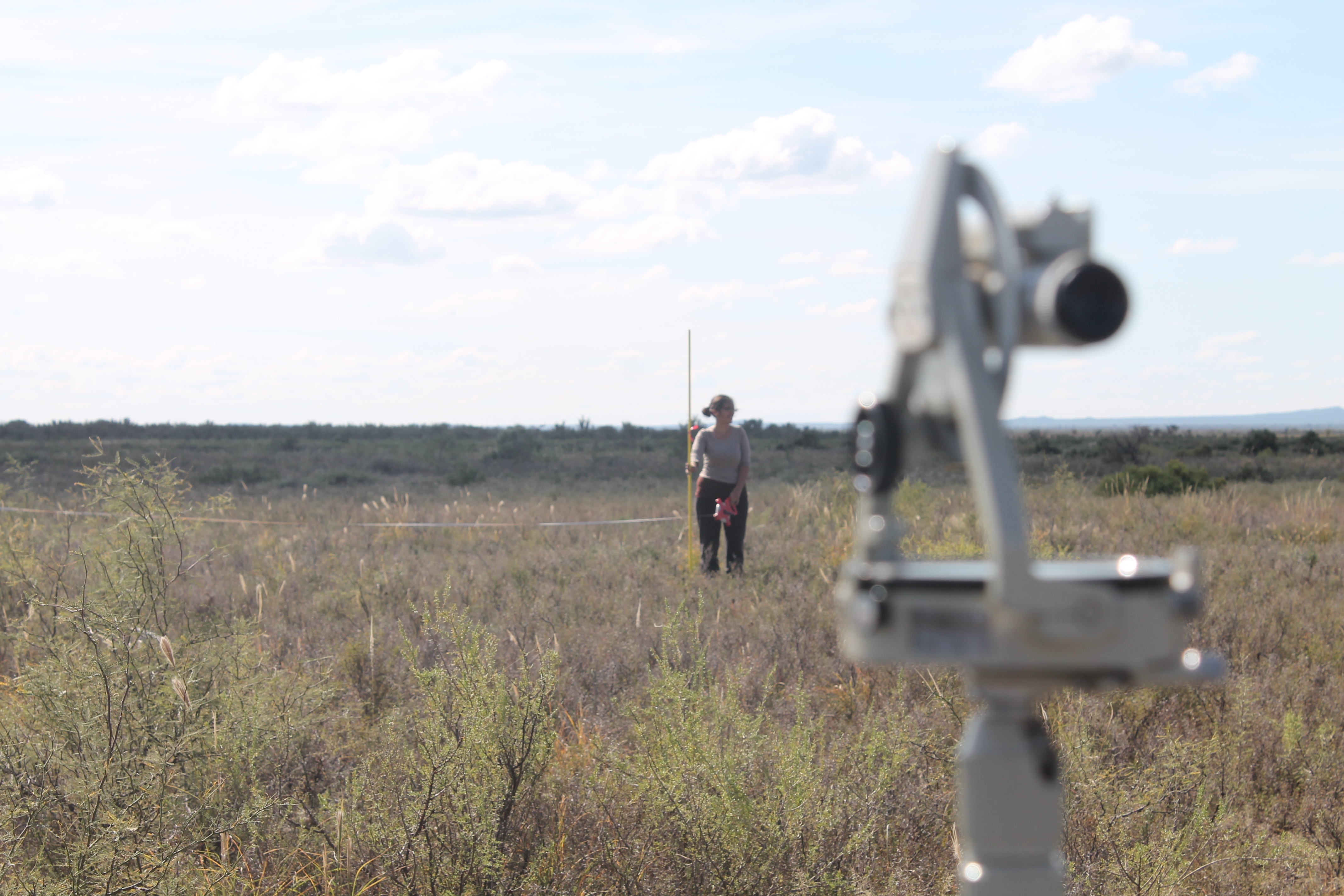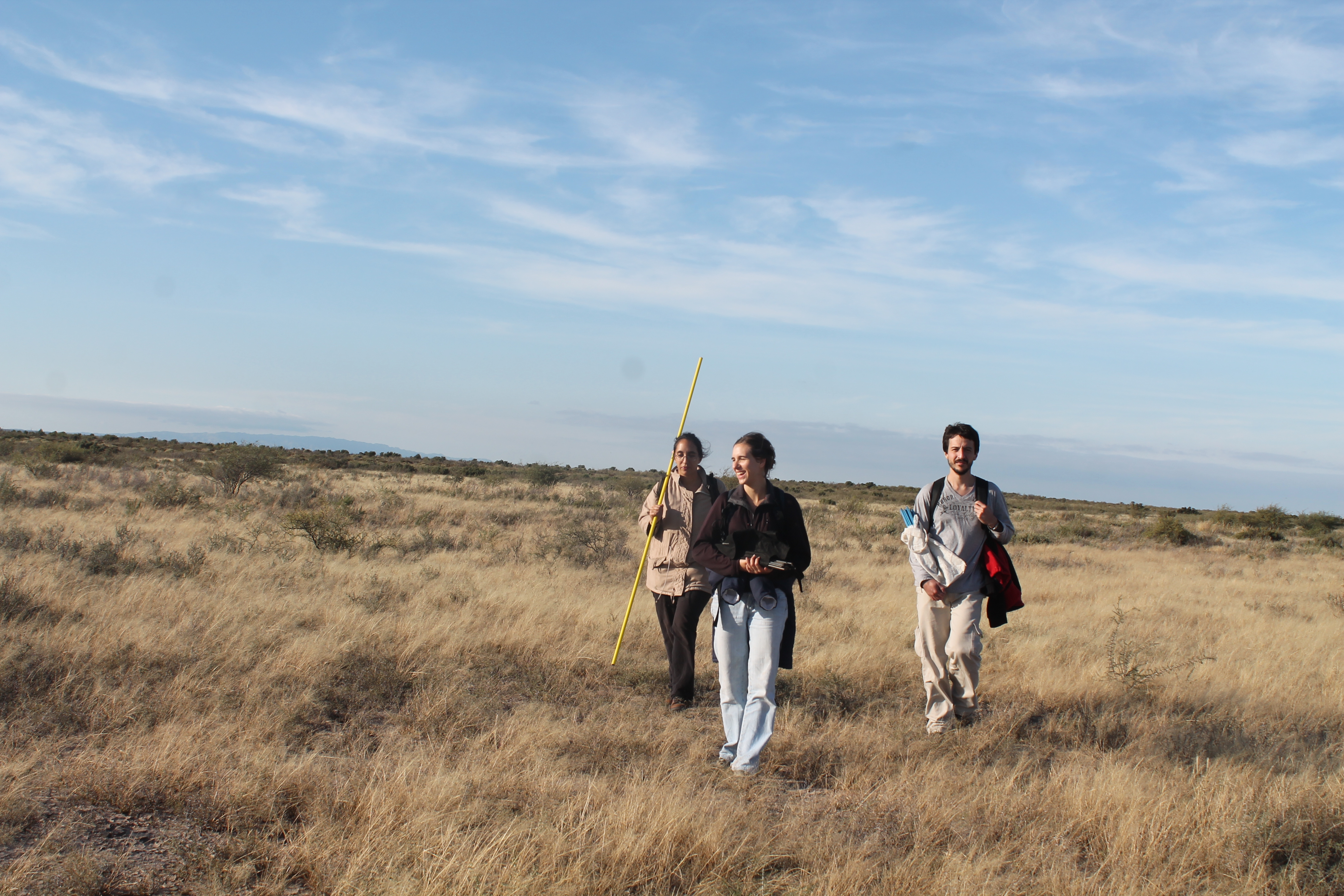Languages
PPBio Argentina
PPBio Argentina started with the PhD project of Lic. Ana Cecilia Ochoa from Universidad Nacional de San Luis, San Luis. She installed a RAPELD module in Parque Nacional Sierra de Las Quijadas to study the small mammals there after learning about RAPELD and PPBio during a trip to Brazil where she spent a few days days at Ilha Grande working as a volunteer on a project.
Later, in 2016, a module was opened in Villa Mercedes in a shrubland habitat known as "Pastizal". In 2018, another module was opened in La Florida, a basecamp of the University.
The university (Universidad Nacional de San Luis) wrote the following; "Professionals linked to environmental sciences have a novel program that allows the study of biodiversity through a data integration methodology to work in different disciplines with different organisms and scales in same sites." - Implementan un programa que mide la biodiversidad a escala mundial.
New book to publicise the native mammal species from PPBio Argentina: Marsupials and Rodents Catalog of San Luis published on the UNSL- Nueva Editorial Universitaria website.
Article published on the University of San Luis website shows PPBio's progress in Argentina - 24/9/2019
September 2019 Updates.
- Parque Nacional Talampaya- La Rioja- Argentina: Sept 2018: We have installed 10 parcels, and have carried out two sampling campaigns (Sept 2018 and May 2019) for small mammal sampling. The work is developed as part of the activities of the Doctorate of Luciana Castillo Sanchez (who is a member of our research project). (Photos)
- Campo Grande - Santiago del Estero- Oct-Nov 2018: We installed a RAPELD module with ten permanent plots in collaboration with a team of researchers from Universidad de Santiago del Estero and the Union de Pequeños Productores del Salado Norte (UPPSAN). This is a participative iniciative for developing a joint biodiversity monitoring program. This work is headed by Carla Rueda, Marta Rueda and Andrea Neme (the last is a Biology student that is developing her graduation project, by designing and accompanying this process). (Photos)
- San Francisco, San Luis Jan 2019: We have installed 5 plots with 5 more planned. We are working in collaboration with a local group, who are resisting the implementation of a mining enterprise, and in this context we are developing a participative monitoring program. In november this year we will develop a course to sample several vertebrate "key species" such as amphibians, birds and bats. (Photos)
 |
Maps (click to enlarge) |
 |










